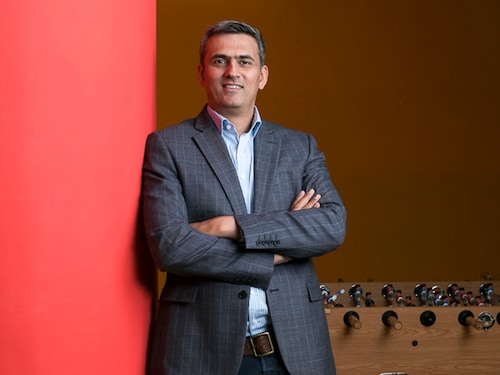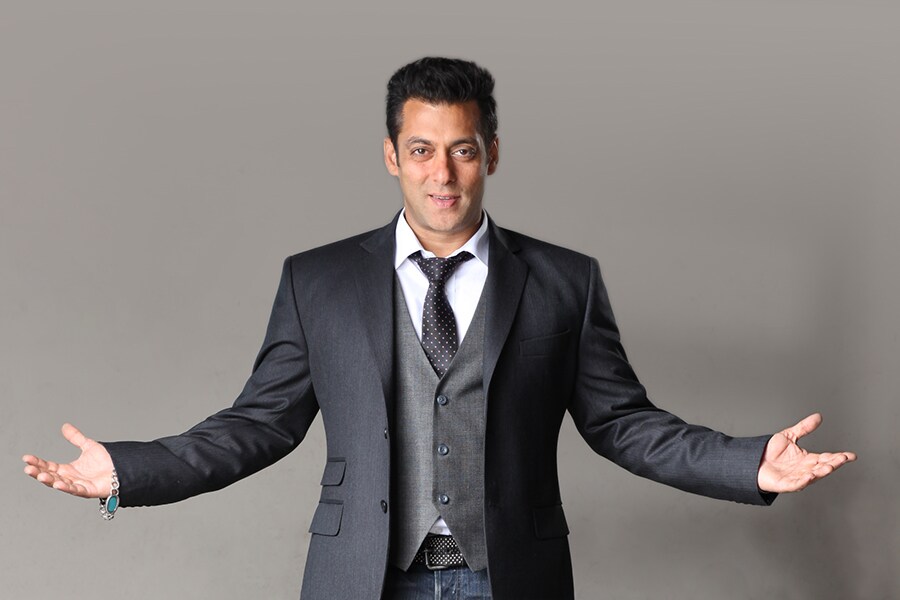Why Yatra doesn't intend to go back to TV
The online travel aggregator was the first in its category to sign on Bollywood celebrities for big-bang advertisements, but says the medium turned into a double-edged sword


 Dhruv Shringi, co-founder, yatra
Dhruv Shringi, co-founder, yatra
Image: Madhu Kapparath / Forbes IndiaYatra, which was the first online travel aggregators OTA to rope in Bollywood celebrities as endorsers—Boman Irani to begin with, followed by Salman Khan and Ranbir Kapoor—has not been advertising on TV since the past year or so, and doesn’t intend to go back to TV.
In a candid chat with Forbes India, Dhruv Shringi, the co-founder, shares his learnings, mistakes, and why celebrity endorsement proved to be a double-edged sword for Yatra to begin with. “It’s better to strengthen your balance sheet whenever you get an opportunity. rather than wait for the ‘right’ time,” says Shringi. “That’s a key learning for me.”
ON NOT ADVERTISING ON TELEVSION…
My worry with TV, which may sound philosophical, is that the consumption pattern in India is getting disrupted. TV viewing now happens for only two main things: Live sports and breaking news. These are the only two segments that attract real eyeballs. Otherwise, there is a record and new phenomena that’s playing out in everything, including Netflix, Amazon Prime and media channels having their own OTTs. So I am unsure at this point in time [of going back to TV for advertising]. Is TV still the right medium? I’m not sure. That’s why we are not on TV at the moment.
The last 6-7 months have been so disruptive for TV, I feel that one has to find the right media of using television—what are the right formats and right events, like a World Cup, for instance—and use those to do television. Otherwise I am not convinced. We are not at the IPL this time around either.
ON YATRA’S RIVALRY WITH MAKEMYTRIP
Over time, only two players emerged in the market—MakeMyTrip and us. I think there are some things they have done really well, and there are other aspects that we were really good at. But we are seeing both businesses grow healthily. We took different approaches towards certain segments—while they went aggressive towards hotels, we were bullish on corporates. We continue to have a healthy regard for each other.
ON HOW HE HAS CHANGED AS AN ENTREPRENEUR OVER THE PAST DECADE
The biggest change is a certain amount of calmness and patience that I now have. Also, there is a realisation that you won’t have all the answers, which used to frustrate me earlier. Now, that frustration and fear [of losing out] is not there. A few years of good execution can build confidence. It tells you that you might not have the answers today, but as you go along, you’ll be able to find the solution. I had a very Fauji [military] approach: Taking one step forward. If it’s a complex problem, try and break it down. You can either get scared by the problem, or if you break it down into smaller problems and solve each one of them, gain the confidence to get to the end point. Yatra’s TV campaign with Salman Khan had unfortunate timing, says Shringi
Yatra’s TV campaign with Salman Khan had unfortunate timing, says Shringi
ON LESSONS LEARNED IN USING CELEBRITIES EARLY ON
There have been learnings in the journey. In October 2006, we went live with Boman Irani on TV. The kind of response that got was unanticipated. It was huge. Our backend systems and processes were not equipped to deal with it. Subsequently, the amount of consumer backlash we got in early 2007 was a real learning. Consumers can be ruthless in India. I had some interesting learning and insights that the consumers shared, their feedback for best practices and how we were not following them was a great learning.
ON WHY ‘BUYING CUSTOMERS BY OFFERING DISCOUNTS IS LIKE RIDING A TIGER’
When you are a public company, it is even more challenging [to dole out discounts] because you are living a quarter-to-quarter life. You can’t suddenly pull back, and if you do, there are other challenges around it. We do feel that before we get sucked too deep into it [heavy discounting], we want to see if we can do it sustainably. I think that’s the key.
From a messaging point of view too, we are trying to say that whatever we do, we will do it in a sustainable manner. It might affect the growth rate in the short run, but we will deliver successfully over an extended period of time. I think the business is mature enough today to be able to strike the balance between growth and profits. We have got a strong enough brand and a large enough distribution network. So even if we are not playing the pricing game, it doesn’t mean we are out of the market. In the initial days, there was this worry that if we didn’t participate [in cash burn], there was this fear of missing out (FOMO). Now FOMO has dissipated on the back of the brand’s strength.
First Published: Mar 30, 2019, 04:31
Subscribe Now